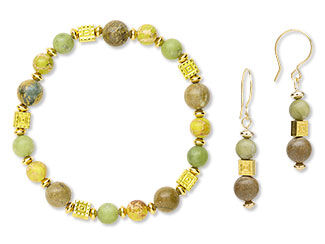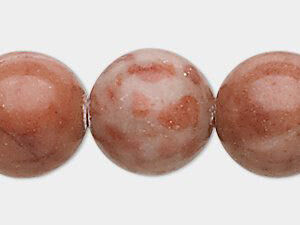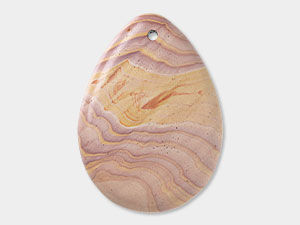Marble Meaning and Properties
Marble History
The name "marble" comes from the Greek word mármaros, meaning "shining stone." There are dozens of different types of marble, each with different cutting and shaping properties. It is commonly used in architecture and for decorative carvings and statuary. Not all marble is white--many forms have swirls and/or veins of color. Marbles--that childhood game--were originally formed out of marble scraps.
Marble's reputation as an architectural material has been known since Augustus, the first Emperor of Rome, covered the public buildings there in it. Even Standard Oil covered the outside of their Chicago headquarters with white marble. (However, marble doesn't handle Midwestern winters well, so they soon had to change it to white granite.)
One of the most famous types of marble comes from the Pietrasanta quarry in Italy, where Michelangelo hunted down the perfect stone to carve his Pieta. His equally famous David is carved in stone quarried from a nearby location.
Marble Metaphysical Properties
Marble is viewed as a stone of potential. Like a block of stone awaits a master carver's touch, so practitioners believe a spirit awaits the awakening of powers of marble. It is said to promote peak states of meditation and support the perfect recall of dreams. Other abilities assigned to marble include self-control, serenity and the growth of an individual's common sense.
Although marble is not an official birthstone, it is associated with the zodiac sign of Cancer. It has no commonly accepted chakra affiliation.
Marble Geological Properties
Marble is a metamorphic rock, made of re-crystallized minerals (primarily calcite and dolomite (aka mountain ''jade'')). This makes marble a member of the carbonate family, cousin to limestone and magnesite.
Marble can be a material on its own, or as a host rock for gemstones such as ruby, sapphire, spinel and more. Due to its recrystallization, newly split marble has a subtle sparkle (much like table sugar) from the millions of cleavage faces freshly exposed to light and air. Marble gemstone materials can include a range of trade names, such as mountain "jade," aqua terra "jasper," zebra "jasper," grain stone, red "malachite," Italian "onyx" and more.
Marble isn't technically mined--it's quarried, like other industrial materials such as granite and sandstone. Lower quality marble materials are crushed and used as aggregate in highways, railroad beds, building foundations and other construction. Pure white marble that cannot be turned into décor items is powdered and used as a coloring agent and filler in cosmetics, paper, whitewash and more.
Marble is usually a light-colored rock, the purest form being completely white. Colors in marble are created by trace minerals in the rock, sometimes diffused for solid color, sometimes deposited in bands, swirls or spots.
|
|
|
|
|
|
|
|
|
|
|
|
|
|
|
|
|
|
Proper Care of Marble
As a member of the carbonate family, marble reacts in contact with acids--including perspiration! (One of its industrial uses is to neutralize environmental acid spills.) So be sure to remove any marble jewelry before engaging in sports or other activities that lead to perspiring. Marble is low on the hardness scale, so it can be easily scratched. It also takes a high polish, which is part of its beauty.
Marble is highly sensitive to moisture and temperature changes, so avoid wearing marble in damp cold environments for extended periods. Avoid household cleansers as well as steam and ultrasonic cleaners. Wipe gently with a warm damp cloth, then pat dry thoroughly. Store in a soft pouch or a fabric-lined box to prevent surface scratches.
Designing with Marble
Designing with marble means designing with color. While Irish Connemara marble is a serpentine green, other aqua terra "jasper" is a blend of icy blues, creams and pastel greens. Red "malachite"--another marble with a popular trade name--showcases cinnamon to brick reds with brown-tinted creams. That's not even including the bright shades that marble can be dyed!
Do remember that marble is a soft stone and easily scratched. Since it takes such a high gloss polish, it's a shame to dull it with unnecessary wear and tear. Marble is glorious in necklaces, pendants and earrings, and probably shouldn't be used in bracelets or anklets. Ideal for tie bars and tie tacs, this stone should probably not be used for cufflinks or watch bands.
A Few Design Inspirations to Get You Started
Shop for Marble
**Please note that all metaphysical or healing properties listed are collected from various sources. This information is offered as a service and not meant to treat medical conditions. Fire Mountain Gems and Beads® does not guarantee the validity of any of these statements.
How did you like this resource? Your feedback helps us provide resources that matter to you most.
Copyright Permissions
All works of authorship (articles, videos, tutorials and other creative works) are from the Fire Mountain Gems and Beads® Collection, and permission to copy is granted for non-commercial educational purposes only. All other reproduction requires written permission. For more information, please email copyrightpermission@firemtn.com.





